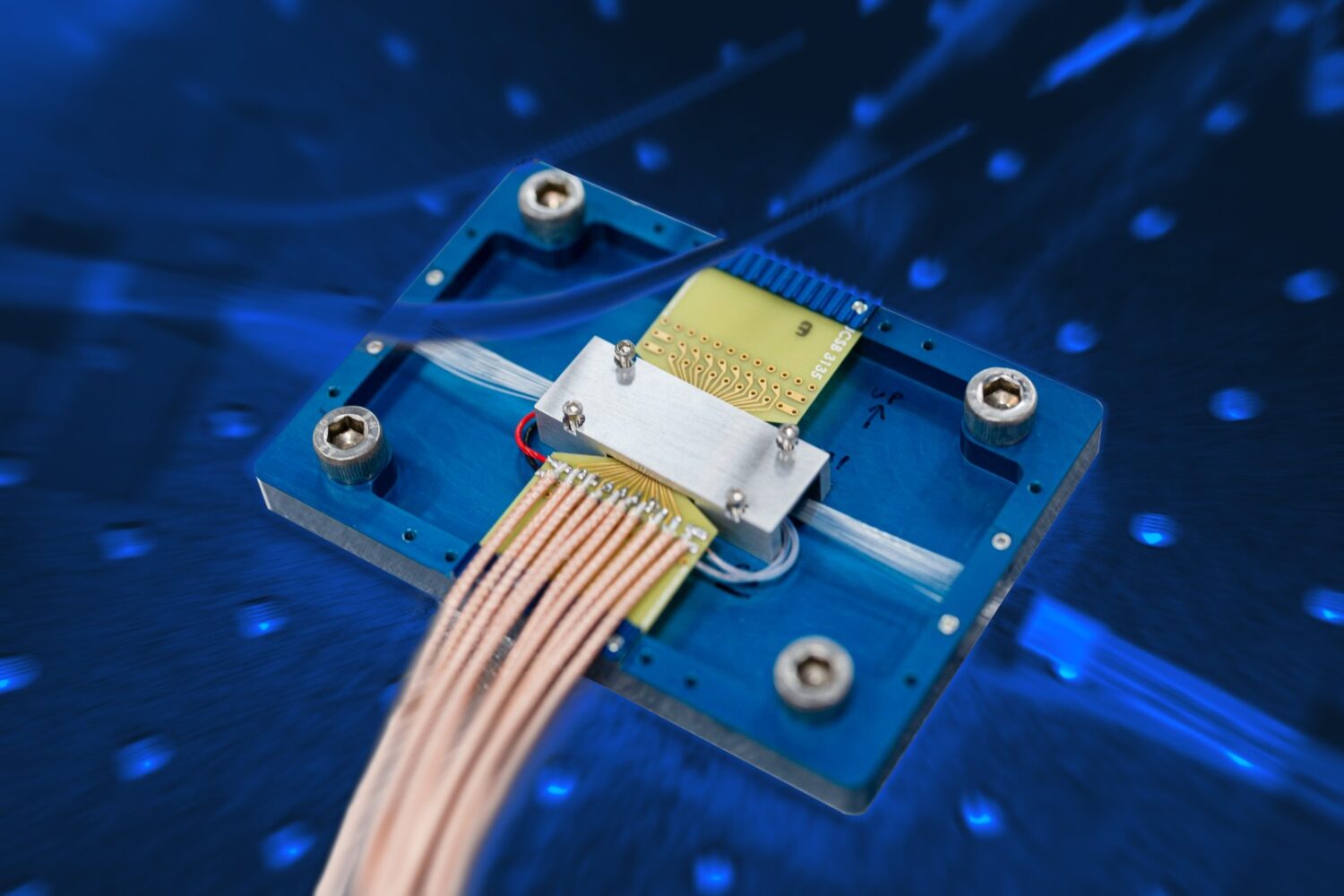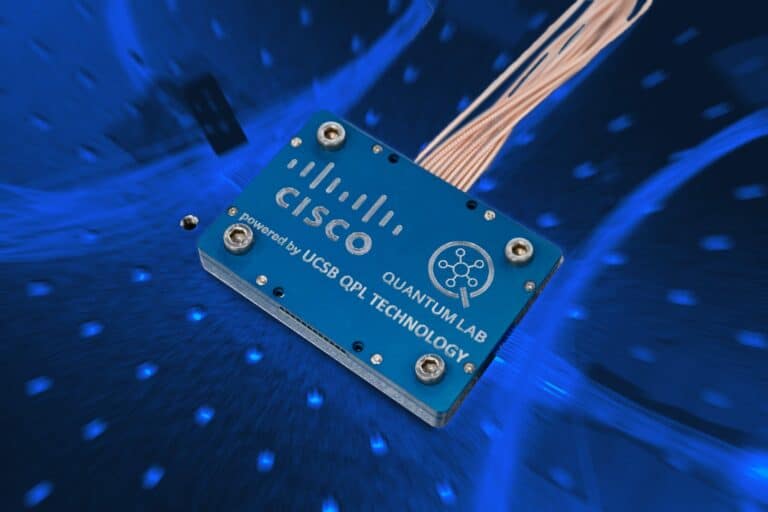Quantum computing has been promising great things for a long time. However, the first large quantum computer is still some way off. But what if we could already start working with distributed systems consisting of multiple smaller computers? Cisco wants to make this possible with its new Quantum Network Entanglement Chip. The company is announcing this new chip today and is also formally opening Cisco Quantum Labs.
In the world of conventional computing, it has been common practice for some time to distribute computing power across multiple locations, spread across data centers and the cloud. Not everything has to take place in a single large server. Nor does everything have to take place on-premises. Yet when it comes to quantum computers, we often still think in very traditional terms. We talk about the number of qubits in the quantum processors of IBM, Google, Microsoft, etc.
Cisco Quantum Network Entanglement Chip
According to Vijoy Pandey, SVP for Outshift at Cisco, this is no longer necessary. Cisco today announced the Quantum Network Entanglement Chip. This chip should make it possible to link multiple smaller quantum computers together. As it were, this would create a larger one.
Cisco’s Quantum Network Entanglement Chip is a prototype developed by the company. It was made in collaboration with the University of California Santa Barbara. The chip uses photonics and generates pairs of photons that are entangled with each other. From here on, things get a little quantum weird, as is to be expected with developments in this field. These pairs enable instantaneous connections regardless of the distance to be bridged. They do this using quantum teleportation. In a blog post on Cisco’s website, Pandey quotes Albert Einstein, who called this “spooky action at a distance.”
The exact details of the new chip are not yet fully known to us. For example, 1 million entangled pairs per output channel are possible. There can be up to 200 million of those pairs active in the chip per second. What this means in terms of performance within our current frame of reference is not yet entirely clear to us at this point. If it’s even possible to use that frame, that is.
In his blog post, Pandey mentions that the Quantum Network Entanglement Chip consumes less than 1 mW of energy. It is also good to know that the chip operates at room temperature. No special conditions are therefore required for it to function. It is a very small Photonic Integrated Chip (PIC). This makes it a practical technology, at least in theory.

Quantum Network Entanglement Chip offers immediate added value
Reading through Pandey’s blog post, it is striking that the practical applicability of the Quantum Network Entanglement Chip and Cisco’s quantum vision in general play a major role. For example, the chip operates at standard wavelengths. This means that existing fiber optic connections can be used to link quantum computers to each other via the new chip.
Between the lines, we also read that the communication taking place via the chip is equipped with quantum security. This means that it uses the principle that in the quantum world, something changes when someone looks at it or listens to it. At this point, it is unclear to us how this relates to the distance restrictions that have applied to some of these technologies (such as Quantum Key Distribution) until now. Quantum teleportation is obviously used. Therefore, the concept of distance may be different from what we are used to. So perhaps this does not play an important role here at all.
Impact on the existing and new world
Cisco is not taking half measures when it comes to quantum computing. The announcement of the prototype of the Quantum Network Entanglement Chip is not all it has to report today. It is also opening Cisco Quantum Labs in Santa Monica. The company has been working at this location for years on developing the components needed for a network stack for the quantum world. So this is more of a formal opening than the actual launch of something new at that location.
In addition to the Quantum Network Entanglement Chip, Cisco is working on other components and prototypes. This includes the development of protocols, a quantum computing compiler, a Quantum Network Development Kit, and a Quantum Random Number Generator. The company is also working on Post-Quantum Cryptography (PQC) standards. These standards are important for keeping traditional networks secure once attackers are able to use quantum computing.
Cisco is going for the whole stack
Finally, it is worth noting that Cisco does not stop at developing the hardware needed to set up quantum networks. It clearly wants to become the foundation for the broader quantum world. This means that it is developing prototypes across the entire stack, from hardware to software. In doing so, it is indicating that it wants to develop a framework that can be used by every supplier and customer that uses quantum technology. Whether this will be successful remains to be seen, of course. In any case, it is clear that Cisco Quantum Labs is working hard on this, although the rest of the world will not be sitting still either.
Read also: Microsoft unveils Majorana 1 chip, a quantum breakthrough?
